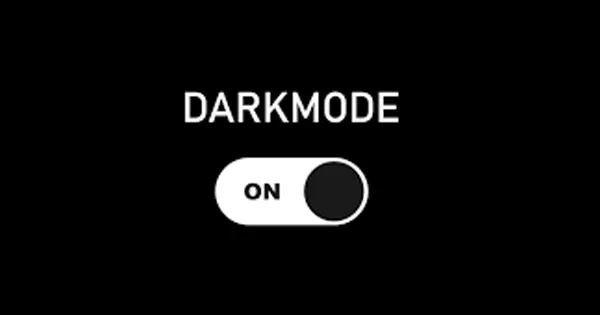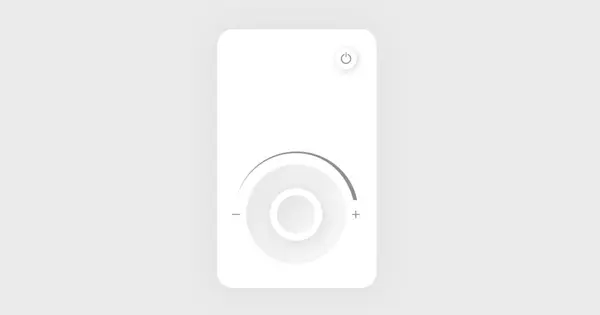Top 5 Website Design Trends in 2025
Written by UIDesignz Aug 6, 2024 4 min read
Last updated: Dec 5 2024

As we move through 2025, the world of web design continues to evolve at a rapid pace. With technology advancing and user preferences shifting, staying updated with the latest trends is crucial for creating websites that captivate and engage. Here are the top five website design trends you need to know about in 2025.
Table of Contents
Dark Mode Everywhere

Dark Mode (FREEPIK)
Dark mode is no longer just a feature; it's becoming the standard. The appeal of dark mode lies in its ability to reduce eye strain, save battery life on mobile devices, and provide a sleek, modern aesthetic. This trend has been steadily gaining popularity, and in 2025, it's a must-have for any website aiming to stay current.
- Eye Strain Reduction- Dark mode's ability to reduce eye strain makes it user-friendly, especially for users who spend extended periods online.
- Battery Life Extension- On OLED and AMOLED screens, dark mode can significantly extend battery life, making it a practical choice for mobile users.
- Modern Aesthetic- The sleek, sophisticated look of dark mode complements contemporary web design trends.
- Creative Branding- Dark mode enhances the visual impact of vibrant colors and logos, making brand elements more striking.
- Industry Popularity- Widely adopted in tech, gaming, and media industries for its modern and immersive feel.
Read More: Top 7 Website Design Tips for Small Business in 2024
Immersive 3D Elements
The use of 3D elements in web design service has seen a significant rise this year. From interactive product models to animated graphics, 3D design elements add depth and realism to websites.
- Interactive Product Models- Allows users to view and interact with products in a detailed, lifelike manner, enhancing the online shopping experience.
- Animated Graphics- Adds a dynamic visual appeal that captures user attention and makes content more engaging.
- Storytelling- 3D elements are used to create compelling narratives that draw users into the brand experience.
- Technological Advances- Tools like WebGL and real-time rendering enable seamless integration of 3D visuals without slowing down website performance.
- User Engagement- 3D elements provide an immersive experience that keeps users on the site longer, reducing bounce rates.
Minimalism with a Twist

Minimalisim (Sympli)
Minimalism continues to be a dominant trend, but in 2025, it's being reimagined with creative twists. Designers are moving beyond the classic black-and-white color schemes and embracing vibrant, unexpected color palettes.
- Bold Color Palettes- Incorporating bright and unexpected colors to add personality to minimalist designs.
- Typography- Using bold and distinctive fonts to make statements without overwhelming the layout.
- Asymmetrical Layouts- Breaking away from traditional grid systems to create more dynamic and interesting page structures.
- Micro-interactions- Adding subtle animations and hover effects to enhance user engagement without cluttering the interface.
- Functional Simplicity- Maintaining a focus on user-friendly interfaces that prioritize ease of navigation and functionality.
Check out our resources page: Design Resources
AI-Driven Personalization
Artificial intelligence (AI) is revolutionizing web design by enabling highly personalized user experiences. AI-driven design tools can analyze user behavior and preferences to tailor content, layout, and recommendations in real time.
- Behavior Analysis- AI tools analyze user interactions to provide personalized content and suggestions.
- Real-Time Adaptation- Websites can dynamically adjust layouts and content based on user preferences and behaviors.
- Chatbots- AI-powered chatbots offer personalized assistance, improving customer service and engagement.
- Predictive Analytics- AI helps predict user needs and preferences, allowing for proactive personalization.
- Performance Optimization- AI-driven insights optimize website performance, enhancing user experience and engagement.
Augmented Reality (AR) Integration
-Integration.webp)
Augmented Reality Integration (ShutterStock)
Augmented reality is breaking into mainstream of custom web design, offering interactive and immersive experiences that blend the digital and physical worlds.
- Product Visualization- AR allows users to visualize products in their own space, improving online shopping confidence.
- Interactive Learning- Educational websites use AR to create engaging and interactive learning experiences.
- Virtual Tours- Real estate and tourism websites use AR to offer virtual tours and immersive experiences.
- Enhanced Storytelling- AR provides new ways to tell brand stories and engage users.
- Technological Accessibility- As AR technology becomes more accessible, it opens up innovative opportunities for web designers to create unique user experiences.
Conclusion
Staying ahead of the curve in web design requires embracing these trends and integrating them thoughtfully into your projects. Dark mode, immersive 3D elements, a fresh take on minimalism, AI-driven personalization, and augmented reality integration are shaping the future of web design. By adopting these trends, you can create websites that are not only visually stunning but also provide exceptional user experiences. As we move through 2025------, keeping these trends in mind will ensure your web design remains relevant and impactful.
To avail our offered services by Professionals kindly Contact Us.





